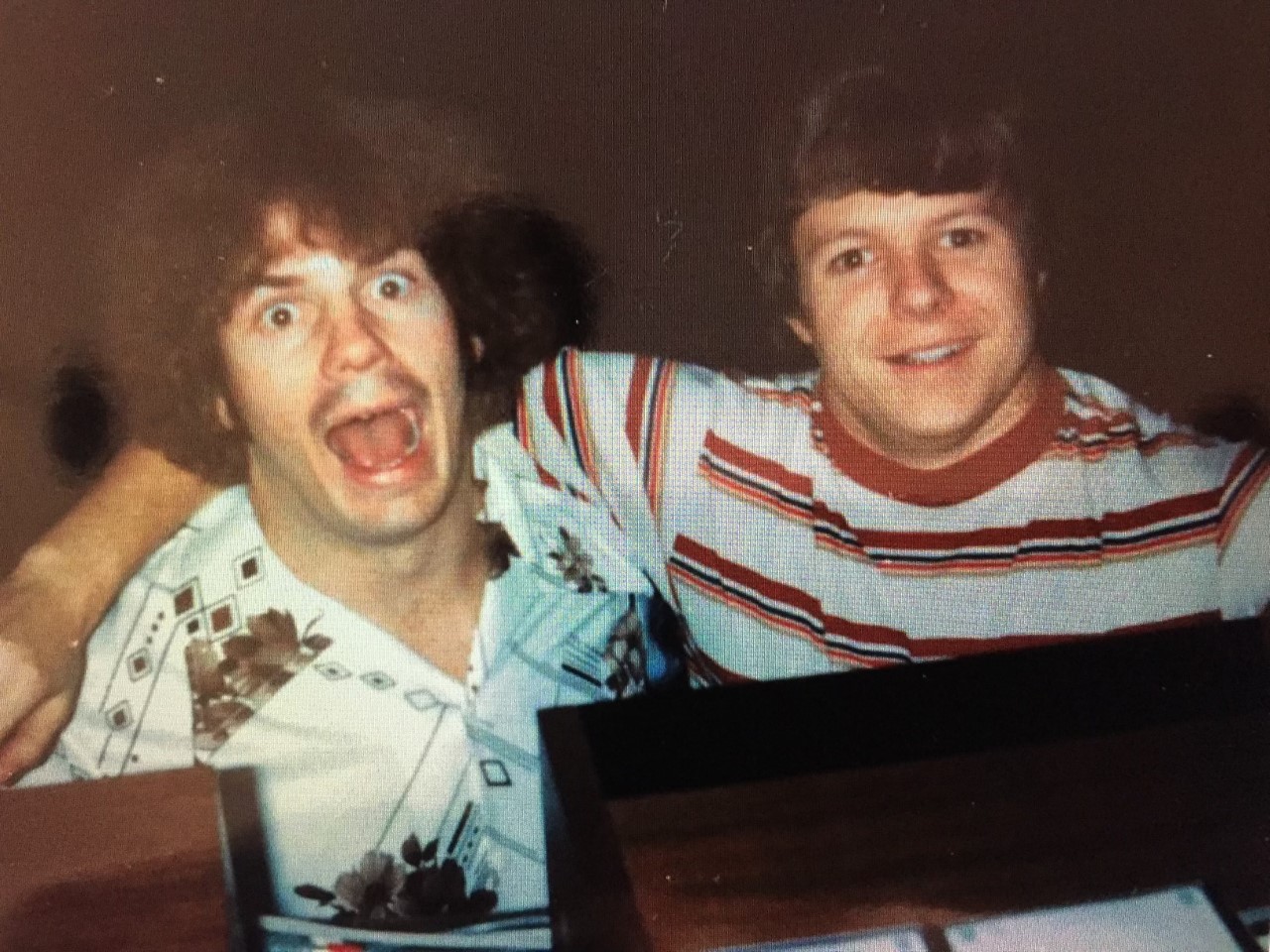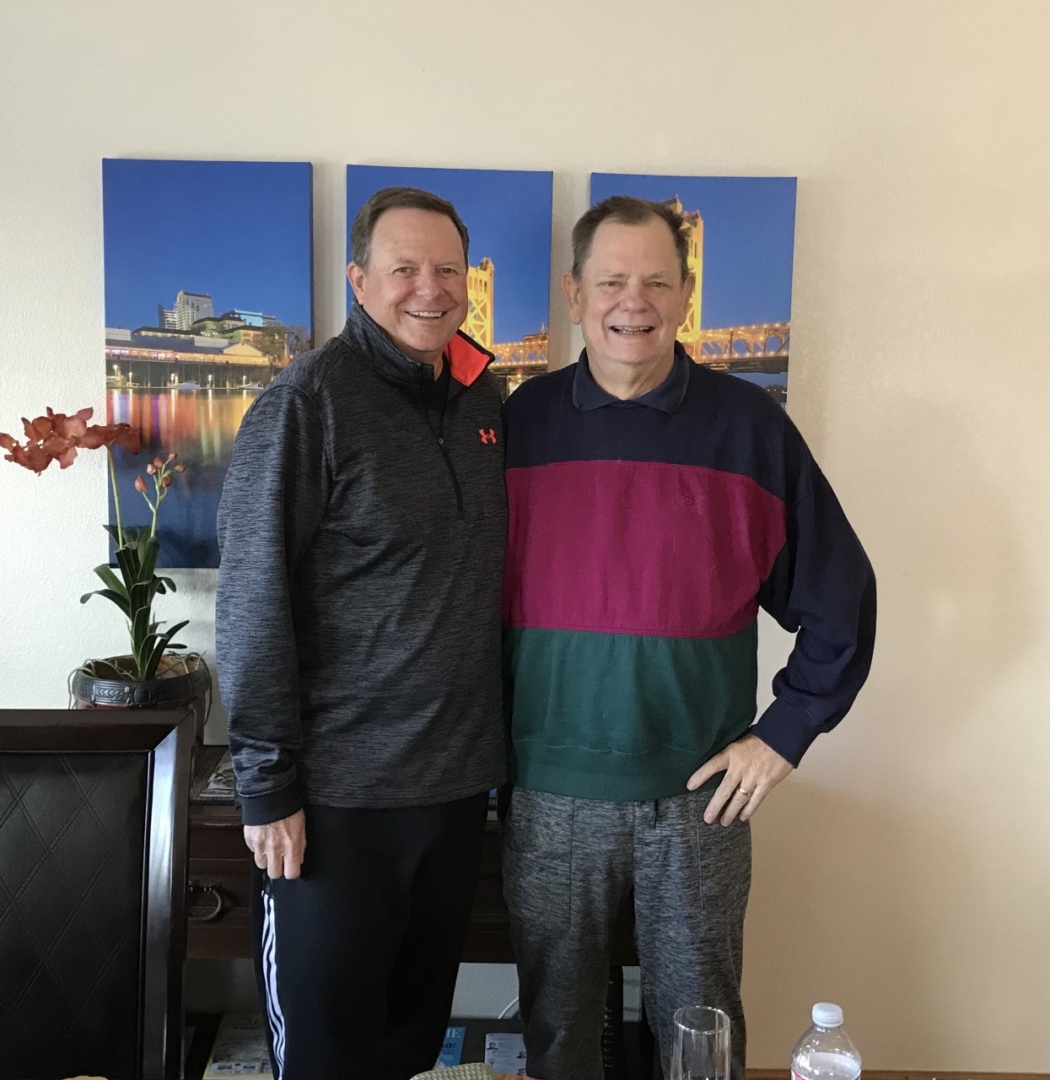College Friends Make A Perfect Match for Organ Donation

It all began at Whitney Hall in 1978, in Bob Phillips’ (Industrial Arts, ’81) dorm room. It was there that Curt Richards (Industrial Arts, ’82), Sarah Butler (Business Administration, ’82), and Stephanie Segal (Liberal Studies, ’83) first met.
“The whole floor was like one giant family,” said Phillips. “I met Stephanie pretty much right off the bat, and I think Curt and Sarah got together toward the end of the year. We all just had a gas.”
After that first year, when they moved off campus, the majority of the second floor decided to move into the same apartment complex. Phillips and Richards had grown especially close—both into sports, they joined intramural basketball, played packed midnight games on campus together, and won the championship. They also went into business together, chipping in for a pair of speakers with two other students to play music at events around town to earn spending money.
“It was truly the college experience,” said Segal. “The campus was smaller back then, the weather was fantastic, people were friendly, and we rode our bikes everywhere.”
The two couples essentially lived together for the next two years, graduated, and then married, moved away, and started families. Phillips and Segal ended up near Santa Rosa, where he worked as an engineer and she started a career as an elementary school teacher, while Richards and Butler landed in Texas—he as a finance manager and she in the mortgage business.
The rest of their Wildcat family spread out all over the country: landing in Texas, Mississippi, Washington, and the Bay Area. The group stayed in touch and would reunite now and again to catch up back at Madison Bear Garden in Chico or in Napa Valley to go wine tasting, and then during the pandemic every Friday for a virtual happy hour.

It was around this time that Phillips’ health issues reached a critical point. After losing a part of his kidney due to cancer in 2018, he had been on peritoneal dialysis, and by early 2020 he shared the news with his friends that his health had reached the point where he needed a transplant.
“When I let my Chico State family know that I was in the process of looking for a donor, I really wasn’t asking,” said Phillips. “But Curt said pretty much immediately, ‘What do I have to do to become a donor?’”
“I consider him a brother from a different mother,” Richards explained. “He said, ‘I need a kidney transplant,’ and I said, ‘Let’s see if I can donate or if I’m compatible.’ It was just a no-brainer.”
The odds of finding a volunteer who matches in both blood and tissue are rare, so both Richards and Butler didn’t yet consider the scope of what such an agreement might actually entail.
“Bob’s been a friend for 40 years, so Curt had to try,” she said. “Honestly, I thought our odds weren’t great, so I wasn’t really worried about it.”
To everyone’s surprise, Richards came back a match.
“My mind really started going—what will this even look like?” Butler said. “But from the get-go, I was on board, 100 percent.”
Rigorous health testing for Curt began in June 2021, and he got the green light just before the holidays. Both families wanted to hold off until the new year, but the medical team was adamant about getting it done sooner than later. The surgery took place on December 7, 2021, at the University of California, Davis Medical Center, almost four years after Bob had been put on the waiting list.
Typically, donors have a harder time than those receiving a transplant. The person who’s been sick suddenly gets a functioning kidney, while a perfectly healthy person loses an organ. Their surgery was no different. Richards had a history of diverticulitis, which had created scar tissue, and when they opened him up, they found his kidney encased in fat that also had to be cut away.
“It was very scary,” said Butler. “The day started at five in the morning and Curt’s kidney didn’t get to Bob until 5 p.m. It was the longest day of my life.”
Once the organ was implanted and Phillips woke up from surgery, he was stunned to realized he already felt better.
“And yet, I felt horrible,” said Phillips. “This is a man who’s giving me life, and he’s having a rough go of it, meanwhile I didn’t even have to take pain pills. It was crazy.”
Recovery, however, ended up being difficult for the both of them. Later that month, Richards was rushed onto a plane and back to UC Davis with severe stomach pains. Doctors thought his remaining kidney was failing but blood work showed it was just a virus. And then Phillips was rushed to the hospital in January after a sudden increase in his creatine levels, which can be a sign of rejection. Thankfully, his levels went back down, and today he feels great.
“I didn’t realize how bad I was feeling on dialysis until the transplant. Curt’s kidney has put me over the top—I’ve since lost about 50 pounds,” Phillips said.
As for carrying a piece of Richards around inside of him now, Phillips sees it as the best outcome.
“This isn’t my kidney,” said Phillips. “That’s the way that I look at it. And I’m obligated to take care of Curt’s kidney.”
Despite Phillips’ new lease on life, Richards doesn’t see himself as a hero. Instead, he’s ready to continue spending quality time with his college friends and thankful Phillips will remain among them.
“It just seemed like the right thing to do,” said Richards. “This is just a lifelong family friendship that’s going to continue until we’re old and gray.”


